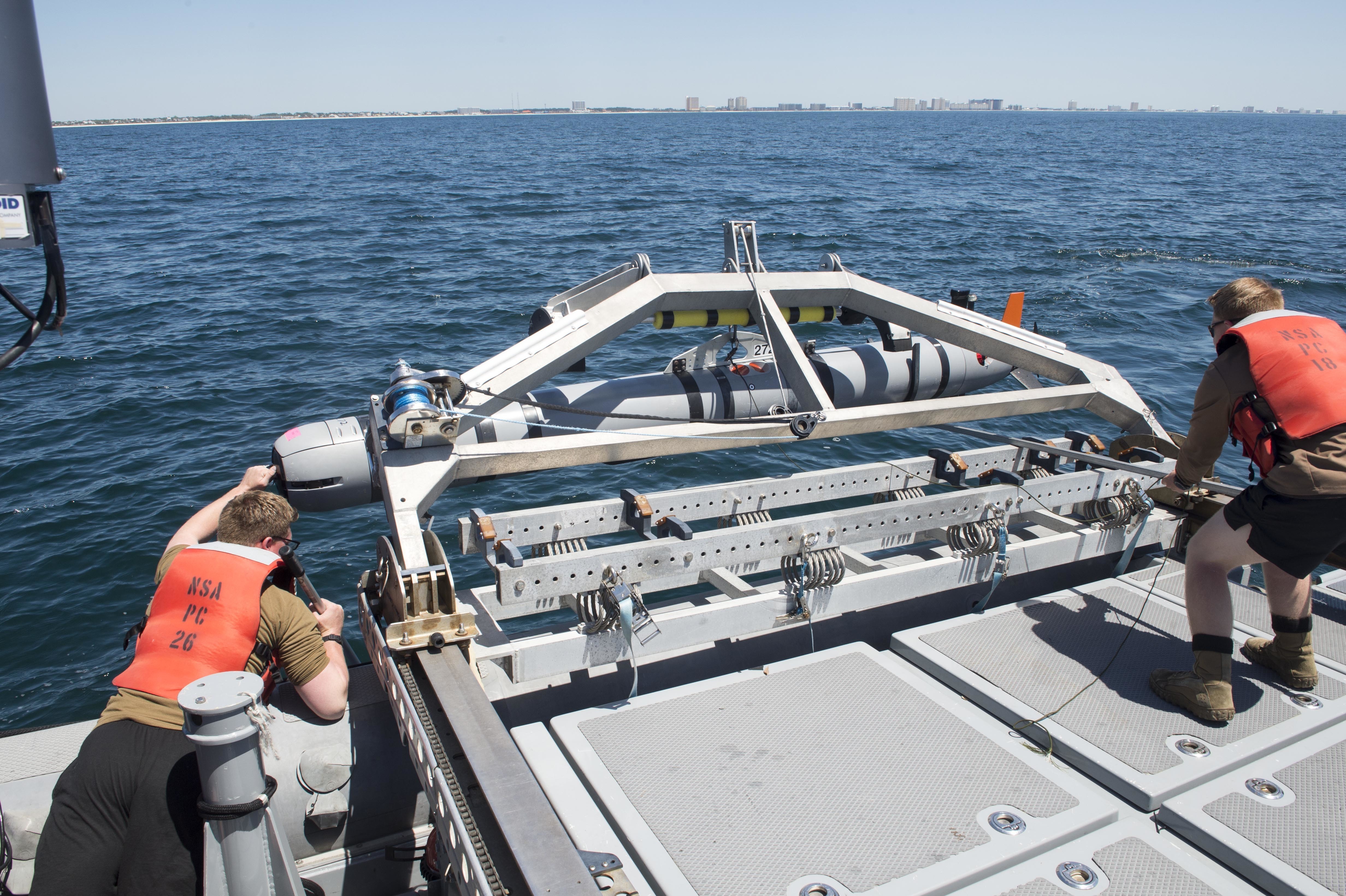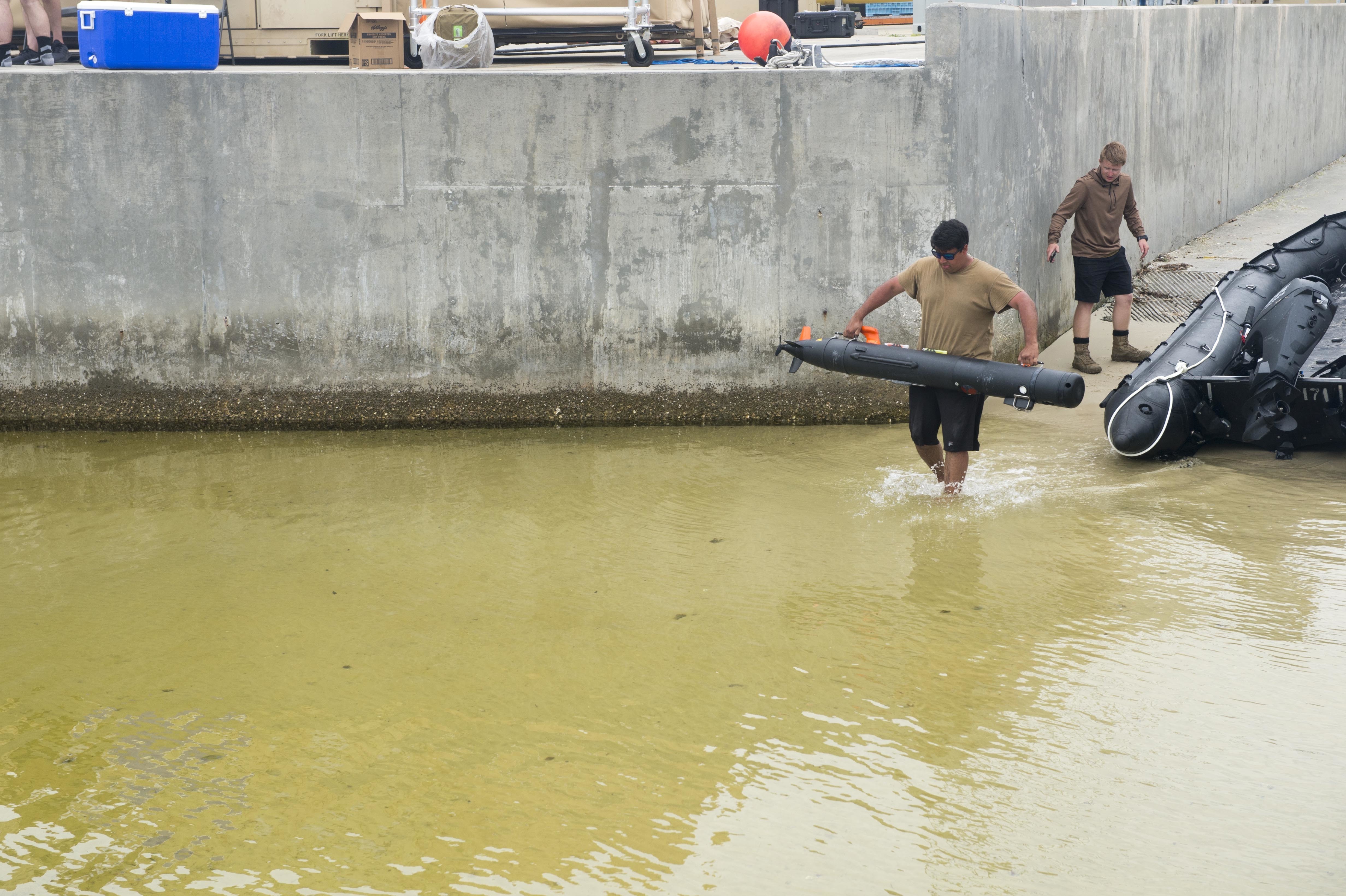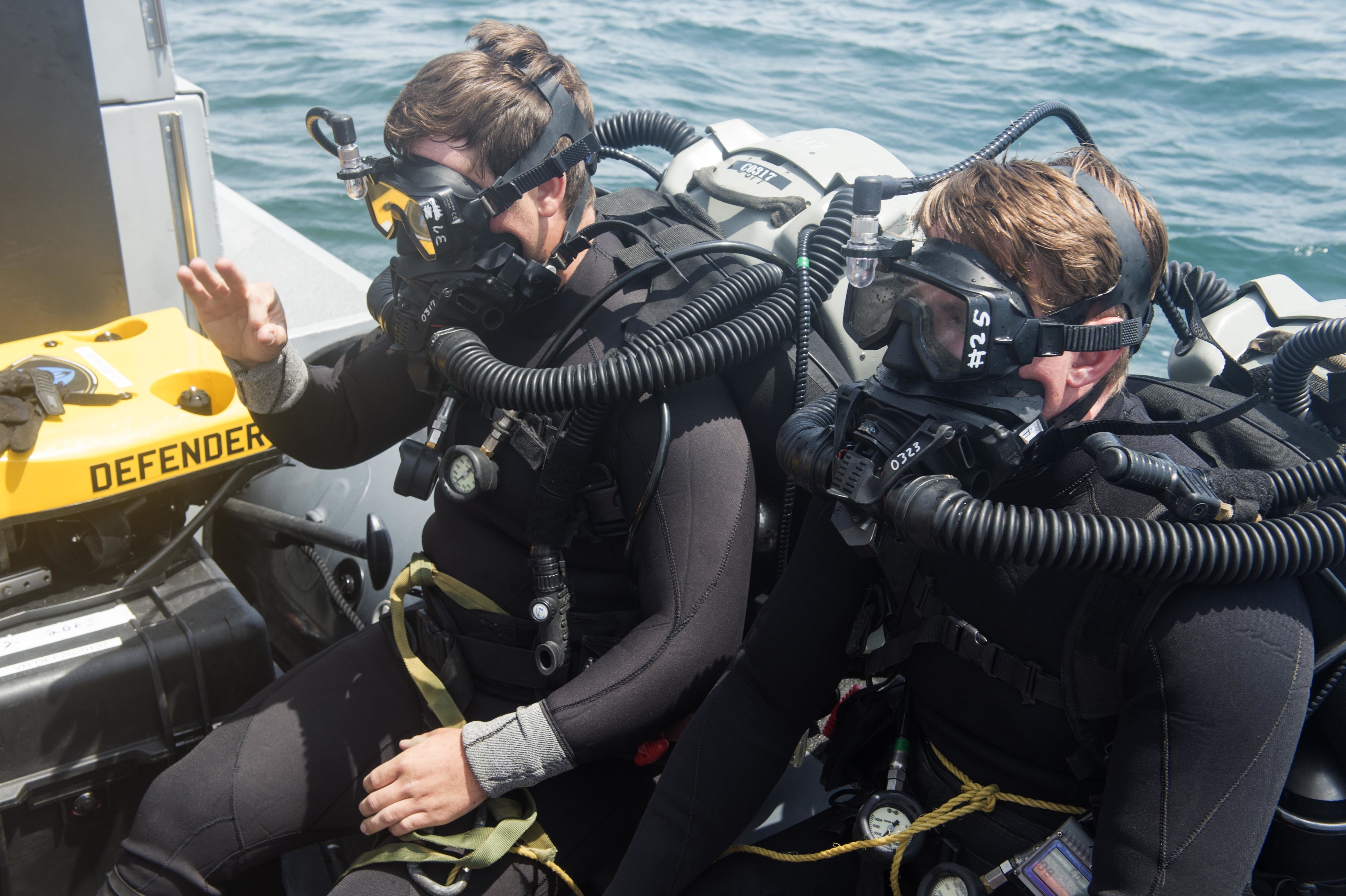
The Navy has spent the last year or so focused on defining what a new era of high-end, modern warfare might look like and therefore what new technologies it will need to defeat advanced threats; though the mine countermeasures community will still face an old threat – sea mines – the community is working hard to advance its technology and its tactics so it can defeat mines faster and more safely to support a future naval battle.
Since the Navy as a whole is increasingly looking to unmanned systems to help solve capability gaps for the peer-competitor fight it’s preparing for, the attention being given to advancing unmanned systems and AI overall could also benefit the ExMCM community.
Lt. Samuel Stearney, the company commander for ExMCM Company 2-2, which falls under Explosive Ordnance Disposal Mobile Unit 2, told USNI News during a recent media call following a certification exercise that the ExMCM community is constantly working with industry to find ways to increase the deployability, endurance and sensor capabilities of the unmanned underwater vehicles they use – the Mk 18 Mod 2 Kingfish for now, moving into a common Medium UUV down the road.
Asked what technological advances he hoped to see come to the ExMCM community, especially as more and more money and focus goes to improving unmanned technology in all domains, Stearney said “one major one is just automatic target recognition. So as we’re seeing artificial intelligence improve everywhere from our phones, our computers and throughout life, same thing with our unmanned systems: Something we’re looking for is better AI technology, and that’s going to help the vehicle learn what looks like a target and what doesn’t – and that’s going to save us hours of just sifting through post-mission analysis data if the UUV can pretty much self-determine what is or isn’t something.”
Aerographer’s Mate First Class (AG1) Robert Carlson, the mission commander of the unmanned systems platoon within the company, said during the media call that sailors have been working with a system that could flag potential targets for them, but the target recognition flagged so many items – pretty much anything that stuck out of the ocean floor – that it was easier sometimes to look at the raw data instead of looking through all the false positives that the software generated. That’s been one topic of conversation between sailors and the fleet support representatives from industry, who act as a liaison between the fleet and the contractors who build the unmanned systems and support gear.

Stearney said that the Navy-wide emphasis on developing and using UUVs and other unmanned systems would help the ExMCM community for two reasons: more focus on UUVs could bring about the technical advances the EOD sailors are waiting for, and more units such as submarines and surface ships using UUVs as remote sensors would generate a better understanding of the undersea space.
“I absolutely think that that would be a beneficial thing to the fleet as a whole. Expeditionary MCM is just one piece in the puzzle; so spreading that capability through the fleet, and the increased sophistication of our systems, it will continue to provide better options and just better understanding and visibility of the undersea battlespace to our Navy leaders and the people who are having to make those decisions,” he said.
Stearney, whose company recently finished a certification exercise ahead of operations in support of Commander, Task Force (CTF) 52 in the Middle East, said the CERTEX in late April tried to stress the company’s tactics, too, to make sure they were ready to operate in a complex environment.
The events fell into two main categories, he said: freeing sea lines of communications, and clearing harbors. Carlson added that the missions included intelligence preparation of the operational environment (IPOE), mapping the ocean floor, and acquiring and reacquiring targets, in addition to the find-fix-finish process of recognizing a potential threat, identifying what kind of explosive it is, putting EOD divers into the water and neutralizing the threat.
Stearney said EOD sailors learn throughout their training that mines are an old technology that are cheap to make and easy to employ – so though they’re an old threat, they’re an enduring threat, and new asymmetric ways to employ them in modern warfare means that EOD training and tactics can’t stagnate.
Stearney said the CERTEX included “employing mines in not just kind of a standard way, but also employing subsurface threats also in an asymmetric way to challenge our way of thinking, [which] definitely helps us to stay on our toes as far as prosecuting the subsurface threat. So that’s why we are looking to stay ahead of the curve of that mine warfare threat by putting the emphasis on developing the technology of our UUVs, because that’s where we can win a lot in that battlespace: the more accurate our technological systems are, the better identification is of that underwater threat. That means that when we send our EOD divers possibly down on to a mine to neutralize it, they know what they’re diving on – and also to that end, utilizing other [remotely operated vehicles] in tactical situations, we can neutralize that threat without ever putting people into the water and into harm’s way.”

The CERTEX also stressed the company’s ability to operate in a disaggregated fashion, ensuring they could still command and control the operation taking place at multiple locations.
“The selling point of the ExMCM company is that we are fast, we are adaptable to the mission, and we are scalable. And that’s kind of where we make our bread and butter,” Stearney said. As opposed to the legacy MCM ships and MCM helicopters that drag sensors and sweeps, “where we kind of differentiate is, we pride ourselves in being able to be quick to deploy and tailor ourselves to the mission that the commander needs. So if it’s a large-scale area, we might need to bring more gear, but if it’s something small we don’t necessarily have to send our entire team, we can send part of the EOD team, part of the UMS team to go accomplish that problem.”
In the CERTEX, they found themselves “setting up tactical operation commands away from each other so that we can test our communications – so if I’m in one spot, I can kind of maintain the command and control with the UMS team in another spot conducting their mission. And I really think that’s the main draw” that ExMCM brings to the fight, he said.





